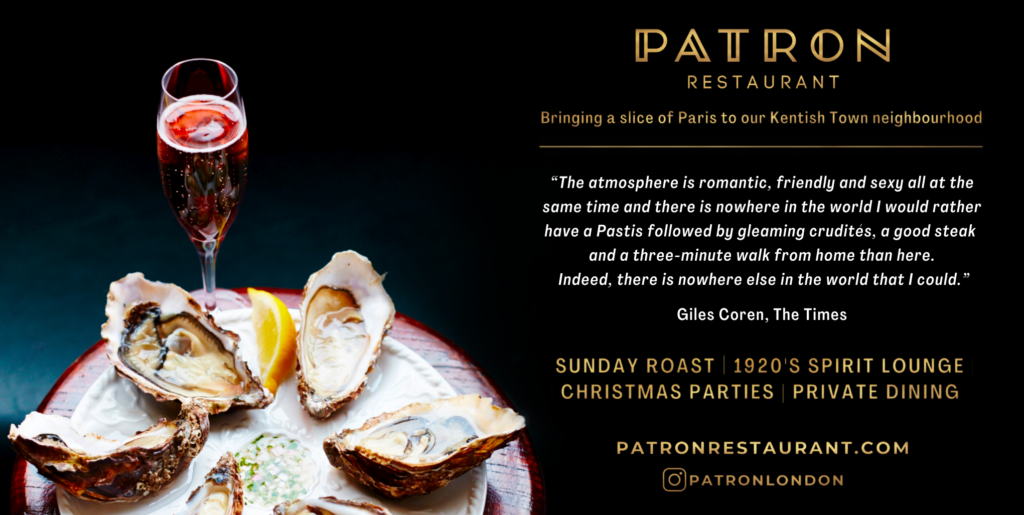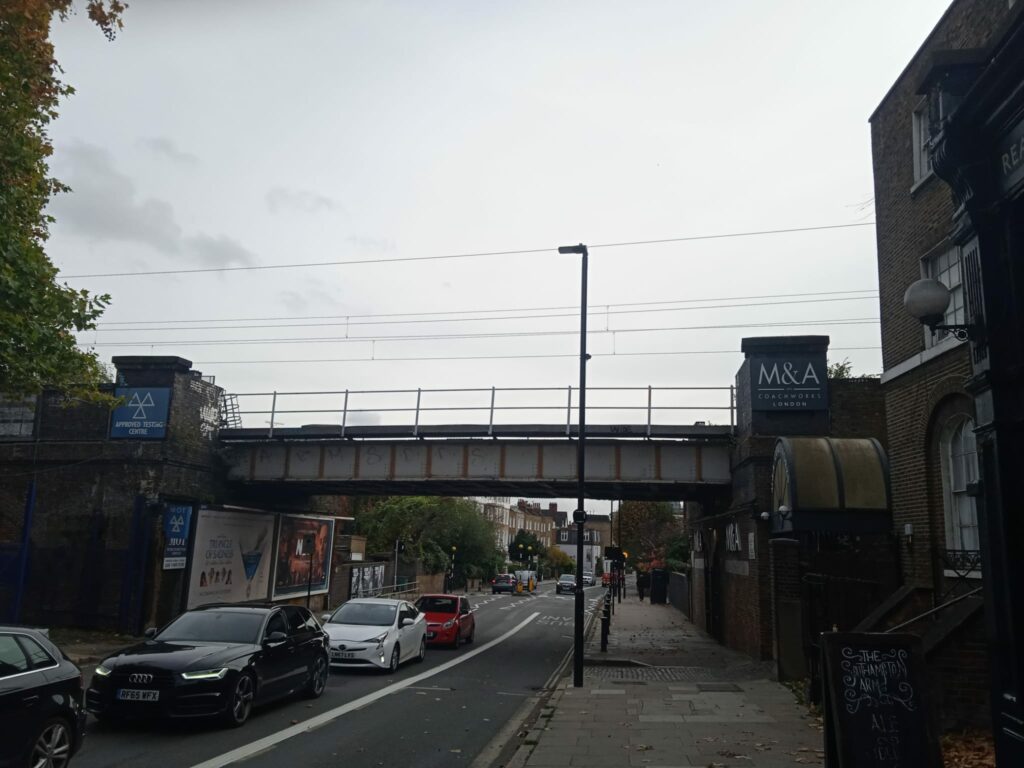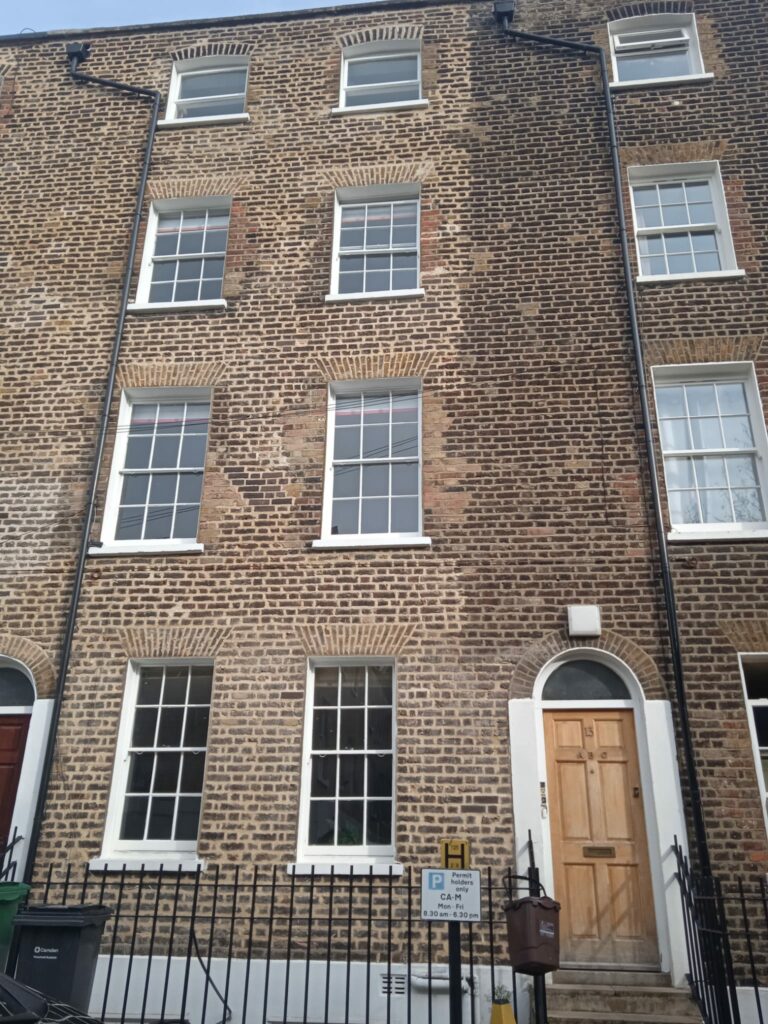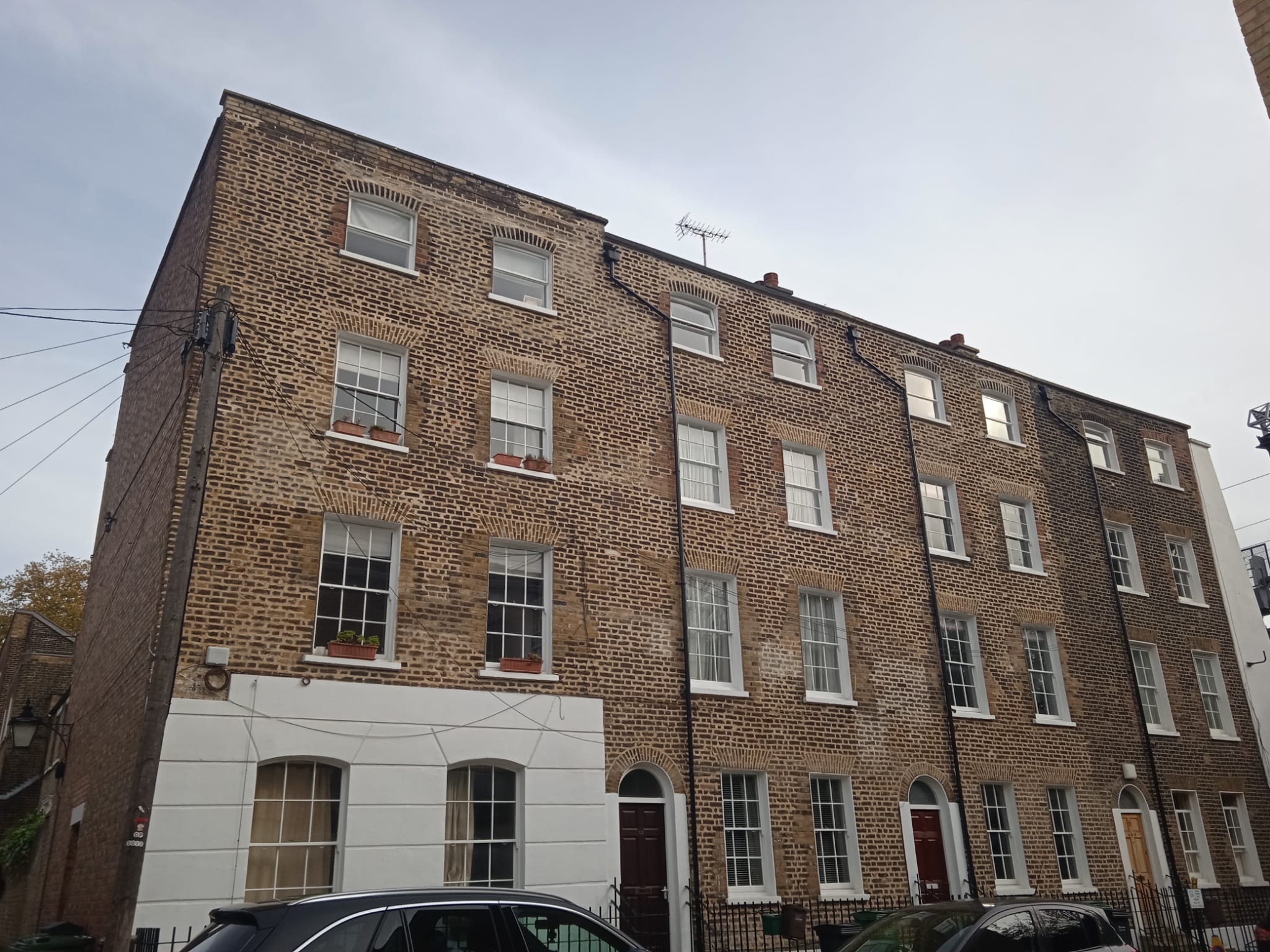If you walk up Highgate Road towards Hampstead Heath, behind the last railway bridge there is a small street. Turn down that, and then another short road, and on Mortimer Terrace you arrive at an unusual sight for this corner of the neighbourhood: four grand Georgian townhouses which look out of place in this semi-industrial Victorian landscape.
This was an entire road of such townhouses before the railways demolished most of it. Until then it was a rural area with a Heath-view across farmer’s fields, and although there is no blue plaque, house No.13 was home to the poet and journalist Leigh Hunt.

Who, you might well ask? Well, Hunt is a spectral figure in biographies of the Romantic poets. He walks through the lives of John Keats and Percy Shelley like an eccentric uncle, sometimes giving advice, but most often borrowing money. He is probably best remembered as Shelley’s impecunious friend, or Charles Dickens’ childlike caricature Harold Skimpole in Bleak House. In the 1800s, however, he was an influential writer and critic, giving a platform to younger poets and amending their early verse. He was considered the better poet in the literary circle that formed around him.
Rewind to 1784 and Hunt was born in Southgate. He worked as a clerk at the War Office until 1808, when his brother started a newspaper called The Examiner and suggested that Hunt be editor. The Examiner proved extremely popular, but the brothers extended far beyond the remit of literary and cultural criticism, often finding themselves in court for sedition. They advocated for abolition, Catholic Emancipation and better treatment of soldiers in the Napoleonic Wars. In 1813, Hunt was sentenced to a full two years in prison for calling the Prince Regent a ‘fat Adonis of fifty’. People admired his incendiary views and he was courted by Lord Byron and Jeremy Bentham, but others wrote that he enjoyed being a martyr. His contemporary and friend, William Hazlit, said he was ‘a vivacious mannerist’ too eager ‘to be the hero of the piece’.

Once released, he continued to be a prolific writer, though in almost constant anxiety and debt. He moved around, wife Marianne and ten children in tow, renting places for a year or two before moving on to the next one.
When he came to 13 Mortimer Terrace in the summer of 1820, it was a busy street with street vendors and musicians. By then, the popularity of The Examiner was fading, and Shelley wrote to him from Italy with a proposal to start a new paper called The Liberal. Hunt’s letters from this time are warm and discursive, commenting on Queen Caroline’s trial (‘the whole thing, indeed, will be one of the greatest pushes given to declining Royalty that the age has seen’, he wrote) and the expansion of Russia.
Keats also stayed at 13 Mortimer Terrace, after Hunt took him in following a severe haemorrhage in June (Keats would not recover and died in the February of 1821 in Rome). Hunt tried to cheer him up, and they spent time reading, walking and writing together. Keats had been unsure of the friendship, complaining to others about Hunt’s poetry and ‘empty’ conversation, but he was grateful as he came to trust him. In Keats’ fevered state, however, Mortimer Terrace’s large windows and sunny exposure caused him to write a prose-poem: ‘Now rooms with the sun upon them become intolerable.’ Hunt and Marianne were also severely ill that summer, under the dual burdens of financial anxiety and Marianne’s alcoholism.

Keats would leave after finding a letter addressed to him from Fanny Brawne had been opened and read by someone in the household. He went to stay with his brother’s friends in Hampstead, although his and Hunt’s friendship eventually survived the ordeal. In fiction and biographies alike, Hunt’s house is shown as chaotic and bohemian, with children running around everywhere. Hunt himself moved out later that year. He joined Shelley in Italy to help found The Liberal, but Shelley drowned at sea one week after his arrival. He was supported by Lord Byron and accompanied Byron and Mary Shelley around the country for a short while, before returning to London.
Despite Dicken’s caricature of a layabout, he wrote incessantly against his debts and was always working. He died in 1859, with a career linking the Romantic and Victorian eras.
13 Mortimer Terrace stands as a reminder of his life and the love that he had of this area surrounding Hampstead Heath, ‘with the metropolis completely shut out’ and the supportive community that existed between him and his friends.
Christina Beaumont is a local tour guide and NW5 resident “passionate about local history and Romantic literature,” she says.
If you’ve enjoyed reading this, perhaps you could help us out, too? Kentishtowner is now in its 12th year, but with the demise of our free independent monthly print titles due to advertising revenues, we need your support more than ever to continue delivering cultural stories that celebrate our neighbourhood. Every contribution is invaluable in helping the costs of running the website and the time invested in the research and writing of the articles published. Support Kentishtowner here for less than the price of a coffee – and it only takes a minute. Thank you.


